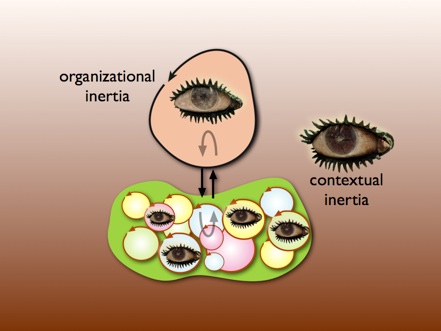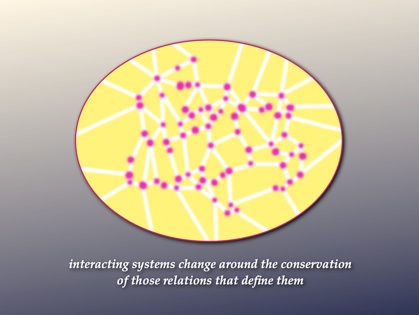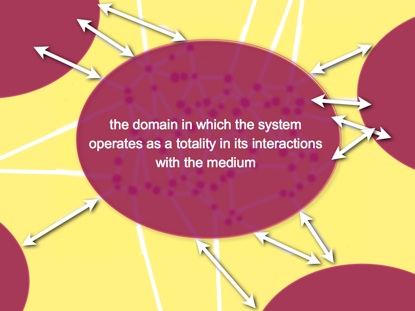Inertia (further development for this page is planned)


the context determines what is possible
Since a system is viable only as long as it is able to exchange energy and materials (mattergy) with its environment, the form of that environment both enables and constrains what connections are possible. Thus when a living system enters a new environment, it must fit in to “make its living” - and this is true also of people living in social systems. People, can, however influence others around them through interactions that are not directly related to energy or material exchange; thus we are under the impression that we can change those systems as we desire through persuasion. Persuasion, too, can be considered to deal with the inertia of existing opinions and other conversations. Cultures, as networks of conversations, thus appear to have an inertia.
a system is also a network of relations
When we look at a system we are in some sense taking a similar look as when we look at a medium as a system of systems. Namely whatever the components of a system, they exist also as a configuration of relations, namely the organization of that system. If one element, say a person in a family, wants to change his or her relations with the others, the others either have to adapt, or the individual must conform to what fits in, or s/he has to leave.
.oOo.

why “inertia”?
Systems sometimes appear to resist change. They appear to have a tendency to keep operating as they have operated. When we like this to be the case, we speak of it as robustness. When we want to change the system, we speak of it as rigid, or perverse - or we look for something or someone to blame.
I have chosen to borrow a word from physics, and speak instead of inertia. Dynamic systems, especially those that are living systems or are constituted as the relations between living systems, don’t really have inertia in the sense of a resistance to any change in its state of motion. However, the dynamics of a system, operating in some context, may fall into patterns that appear to resist change. There are obviously many different dynamics entailed in this, will distinguish two types here; being aware that this pair of distinctions is only one way of looking at this phenomenon.

a perspective for observing dynamics
If I look at the relational dynamics among the elements of a system, I am looking “inside” the system trying to understand what keeps it doing whatever it is doing. In this perspective I may speak about the inertia of that organization, hence “organizational inertia”. If my view is more towards the medium, and how that constrains the behaviour of the system, I may speak about the inertia of the medium, or “contextual inertia”.
Not only are these two distinctions somewhat arbitrary because the system is always interacting with its medium, but contextual inertia is really a network of what could be regarded as other systems, each with their organizational inertia. In a way, it is the complex of relationships itself that IS the inertia, as it is difficult to change any one while all the others are configured in some workable way - workable but not necessary “best” from a human interest.

The course of the history of interacting systems is determined by the configuration of relations between them that is conserved, while the interacting systems change around the conservation of the configuration of relations that define them.
Maturana



